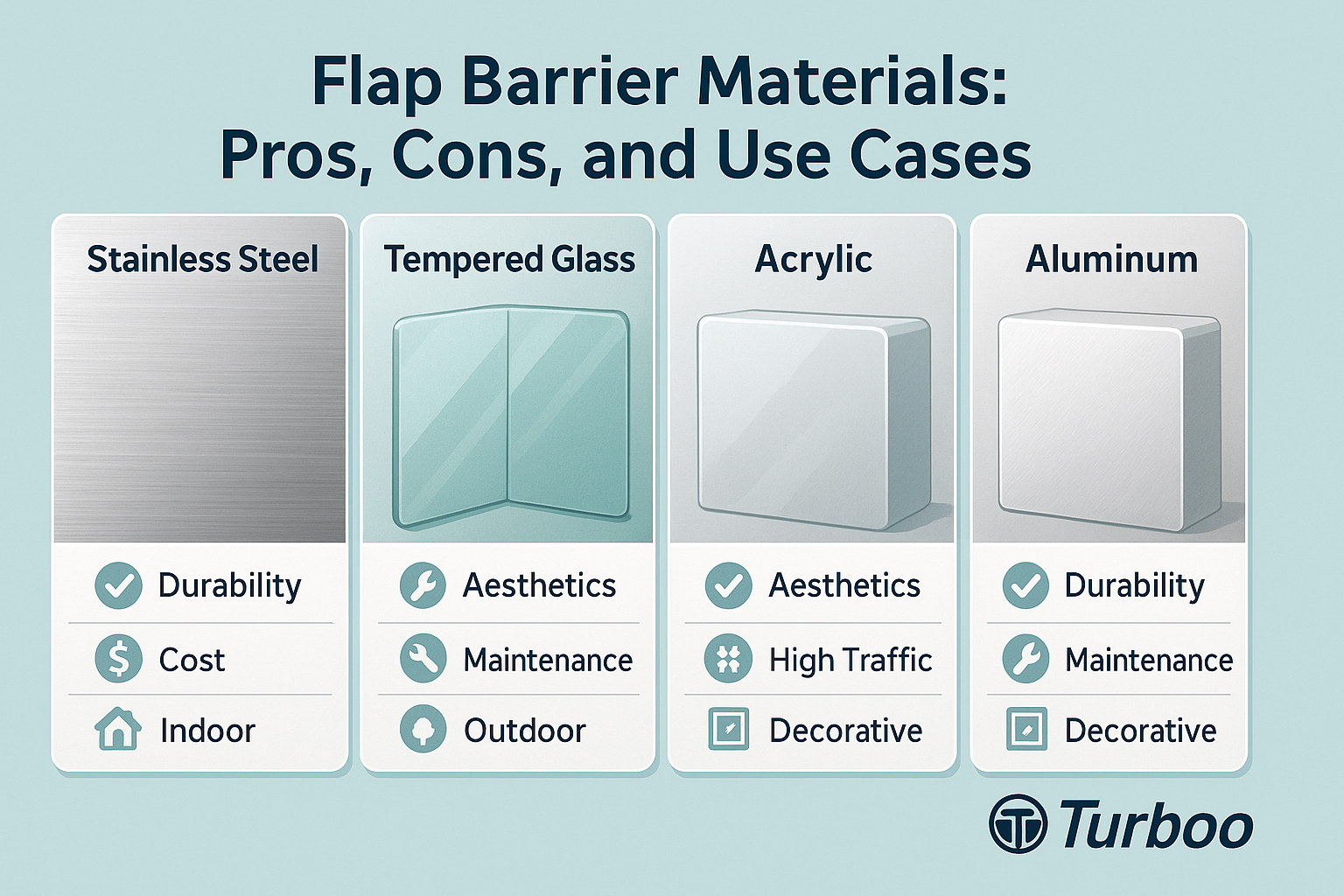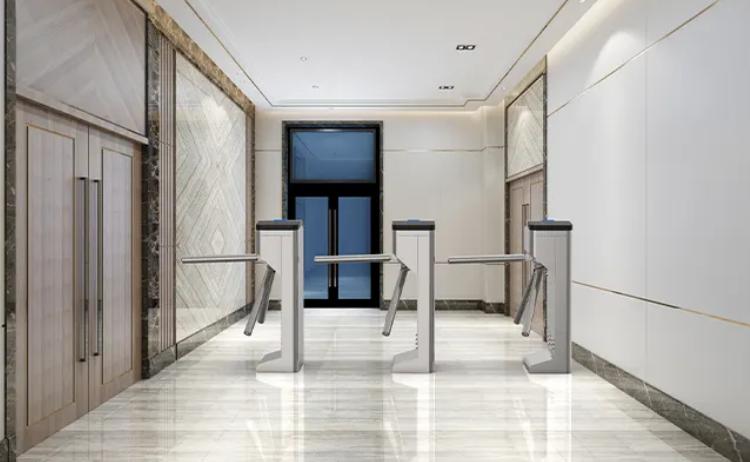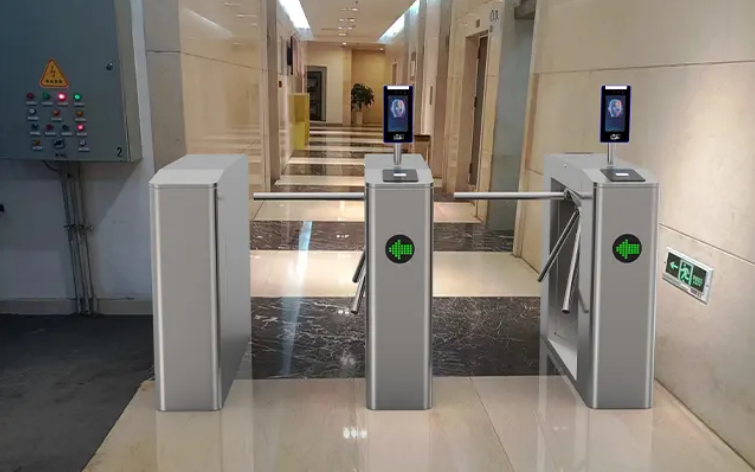Flap Barrier Materials: Pros, Cons, and Use Cases


When it comes to selecting a flap barrier for any access control project, material choice is one of the most crucial decisions. The type of material used defines not just how the barrier looks—but how long it lasts, how much upkeep it needs, and how it performs under pressure.
What many people don’t realize is that the right material can mean the difference between a high-performing, low-maintenance system and one that constantly breaks down or degrades too soon. In fact, material choice directly affects barrier durability, visual appeal, and long-term value. And yet, it’s often overlooked in the decision-making process.
This article breaks down each material type commonly used in flap barriers. You’ll get a clear, honest look at the pros and cons of each—plus guidance on where each one works best. Whether you’re a facility planner, engineer, or part of a procurement team, this guide will help you make smarter, more informed choices.
By the end, you’ll have a step-by-step understanding of which flap barrier material fits your needs best, how it will perform over time, and what to expect in terms of maintenance and longevity.
Why Material Choice Matters in Flap Barriers
Material selection isn’t just about aesthetics. In flap barrier design, the material determines the barrier’s strength, weather resistance, ease of maintenance, and even user safety. Choosing the wrong material can lead to premature corrosion, cracks, or mechanical failure. Worse, it can create safety risks in high-traffic or emergency scenarios.
Flap barrier durability is directly tied to the strength and resilience of the core materials used in both the frame and the flaps themselves. Stainless steel can resist corrosion and vandalism for years. Aluminum offers lightweight handling but may not hold up in industrial zones. Glass and acrylic look modern and elegant, but they come with trade-offs in scratch resistance or shatter vulnerability.
Over the product’s life, the material also affects total maintenance needs. Stronger materials usually mean fewer replacements, less frequent service calls, and a better return on investment. From a safety perspective, the right material prevents injury during accidental bumps, ensures smooth motion under load, and holds up in emergencies like fire evacuations or power failures.
Aesthetics also matter, especially in high-end commercial or hospitality spaces. You want a material that blends with the architecture while still offering the durability your use case demands. Material choice becomes a balancing act between design, performance, and long-term maintenance costs.
Common Flap Barrier Materials Explained
Stainless Steel
Stainless steel is the most common and trusted material for flap barrier enclosures and frames. It offers unmatched strength and corrosion resistance, making it ideal for demanding environments. In particular, 304-grade stainless steel is widely used for indoor and semi-outdoor locations, while 316-grade adds higher resistance to chlorides, salt, and industrial contaminants—ideal for coastal and high-humidity areas.
The biggest advantage of stainless steel is its long-term strength. It doesn’t warp, dent, or rust easily, which means it can handle thousands of users daily without showing wear. It also adds a sleek, modern appearance that suits both functional and premium installations.
However, it comes with some downsides. Stainless steel is heavier than other materials, which can make installation and transportation more challenging. It also costs more upfront, especially in higher grades or customized finishes.
Best use cases include outdoor gate entries, public transport terminals, and secure government facilities. These are locations where durability, anti-vandal properties, and environmental resilience are non-negotiable.
Aluminum Alloy
Aluminum alloy is often selected when weight reduction and ease of installation are top priorities. It’s lighter than steel, yet still strong enough to handle moderate traffic and provide a polished appearance. Its natural corrosion resistance also makes it suitable for semi-outdoor environments where exposure is limited.
One of the major advantages is cost-efficiency. Aluminum barriers tend to be more affordable than stainless steel while still offering solid performance. They are easier to shape and mold, allowing for more design flexibility and faster production times.
However, aluminum is less impact-resistant than steel. It can dent or bend under strong physical pressure or vandalism. Over time, heavy traffic may reveal signs of wear more quickly. It also lacks the high-end finish that steel or glass can deliver in luxury spaces.
Common use cases include indoor lobbies, office buildings, or school campuses—places where security is important but the physical demands are not extreme.
Acrylic Panels
Acrylic is often used for the flaps themselves rather than the frame. It’s a clear, lightweight, and visually appealing material that offers an open, inviting look. Acrylic is popular in modern designs because it makes the entry feel less industrial and more accessible.
A major benefit of acrylic is design versatility. It can be tinted, branded with logos, or cut into unique shapes. It’s also relatively inexpensive and easy to replace if damaged. Acrylic works well in lower-risk settings where aesthetics are just as important as function.
But it’s not without its challenges. Acrylic is prone to scratching and cracking if struck hard. It doesn’t have the same impact resistance as tempered glass, and over time, it can become cloudy or faded—especially under UV exposure.
Ideal use cases include corporate offices, commercial lobbies, and reception areas where visual appeal matters and physical stress is minimal.
Tempered Glass Panels
Tempered glass offers the best of both worlds—visual elegance and mechanical strength. It’s much stronger than acrylic and more resistant to scratching. If it does break, it shatters into blunt pieces, reducing the risk of injury.
Tempered glass is widely used in premium commercial spaces, airports, and hospitality environments where branding, visibility, and modern aesthetics are crucial. It pairs beautifully with stainless steel or aluminum frames to create a high-end look without compromising performance.
That said, tempered glass is heavier and more expensive than acrylic. While rare, it can shatter under extreme impact, requiring full replacement. It also needs careful installation to avoid stress points that could reduce its structural integrity.
It’s best used in environments with controlled foot traffic and where appearance, brand integration, and smooth operation are priorities.
Key Factors When Selecting Materials
Durability and Strength
When selecting flap barrier materials, durability and strength should be at the top of your list. These two traits affect how long the barrier lasts and how well it performs under pressure. Stainless steel leads in both categories. It resists corrosion, deformation, and physical damage, making it ideal for areas with constant use or high risk of impact.
Aluminum, while durable, doesn’t match steel in strength. It’s suitable for moderate use but may show dents or fatigue over time. Acrylic and tempered glass offer visual benefits but differ significantly in resilience. Acrylic is more prone to scratches and cracks. Tempered glass is tough but must be handled correctly to avoid edge damage or sudden failure under high stress.
Material durability is what separates a five-year investment from a ten-year one. Choosing the right material now means fewer replacements later. For a full discussion on long-term performance, visit this detailed article on flap barrier durability. It shows how material strength plays a direct role in reducing downtime and service costs.
Specifications and Compliance
Every facility has different physical constraints and regulatory requirements. That’s why it’s essential to match your flap barrier material to the overall technical specifications of your project. For example, some materials are more adaptable to custom widths or thicknesses, making them better for tight or unusually shaped spaces.
Aluminum is easier to machine and mold, which makes it a good choice for customized dimensions or designs. Stainless steel, though more rigid, can still be tailored with precise CNC machining if high strength is also needed. Glass and acrylic panels must be cut and tempered with accuracy, leaving less room for modification after production.
Compliance is also critical. Materials must align with safety, environmental, and operational standards. Fire ratings, electrical insulation, and material strength all fall under regulatory guidelines. Ignoring these can result in failed inspections or legal issues.
For a full breakdown of sizing, tolerances, and material specs, review the flap barrier specifications page. It covers how to match materials with performance expectations, clearance needs, and compliance requirements.
Customization Options
A well-designed barrier doesn’t just perform well—it also looks like it belongs in the space. That’s where customization options come into play. Depending on the material, you can request custom finishes, colors, logos, and branding elements to blend the barrier into your architecture or visual identity.
Stainless steel can be brushed, polished, or coated for different textures. Aluminum can be anodized or powder-coated to match corporate colors or unique interior schemes. Acrylic can be tinted, etched, or branded. Glass panels can include frosted sections, logo applications, or colored inserts.
You can also customize thickness and dimensions to better suit traffic patterns, accessibility standards, or aesthetic preferences. This is especially important in buildings with tight entryways or high-volume throughput, where standard models may not fit.
To explore all available finishes, branding options, and special designs, visit the flap barrier customization guide. It offers examples of how different materials can be personalized without sacrificing function or durability.
Customization isn’t just a style choice—it’s about making your system efficient, on-brand, and architecturally integrated. And with the right material, those options expand significantly.
Industry Standards and Material Quality
Importance of Material Testing
Not all materials are created equal. Even when two barriers claim to be made of the same substance, their quality can vary. That’s why material testing and certification are so important. These processes ensure the raw materials meet performance expectations in areas like strength, resistance, and longevity.
Reputable vendors use third-party labs to verify the hardness of metals, the clarity and impact resistance of panels, and the adhesion of coatings. This kind of testing provides clear, numerical data that confirms the quality of the material—before it’s installed in your building.
To explore detailed specs, chemical properties, and test results, check resources like MatWeb’s material guide. It’s a comprehensive database for engineers and buyers who need to validate materials against performance targets.
Material testing gives you confidence. It proves the barrier will perform as promised, hold up in your environment, and provide consistent operation over years of use.
International Material Norms
When selecting materials, international compliance matters. Especially for global procurement teams or projects in regulated industries like aviation, banking, or healthcare, the materials used must meet international norms and safety codes.
For example, ISO (International Organization for Standardization) provides key benchmarks for material strength, corrosion resistance, and manufacturing consistency. ISO 9227 tests for salt spray resistance, which is crucial for coastal installations. ISO 6892 covers tensile strength in metals. These certifications are important signs that your flap barrier materials are globally trusted.
For a comprehensive look at applicable standards, visit ISO’s standards hub. These guidelines help ensure the products you’re sourcing align with both performance expectations and legal obligations.
Using materials that meet international standards means fewer compliance risks, better documentation, and often easier approval in government or commercial bids. It’s a smart way to add reliability and credibility to your purchase.
Summary – Pros, Cons, and Use Cases at a Glance
Choosing the right material for your flap barrier doesn’t have to be complicated. Here’s a quick-reference guide summarizing the advantages, disadvantages, and most suitable applications for each major material type:
- Stainless Steel
- Pros: Exceptional strength, corrosion resistance, long lifespan, minimal maintenance.
- Cons: Higher weight and cost, less flexibility for intricate designs.
- Best Use Cases: Outdoor gates, metro stations, government buildings, industrial zones.
- Aluminum Alloy
- Pros: Lightweight, naturally corrosion-resistant, affordable, good workability.
- Cons: Lower impact resistance, may deform under strong physical pressure.
- Best Use Cases: Indoor lobbies, corporate campuses, educational institutions.
- Acrylic Panels
- Pros: Visually appealing, light, customizable, cost-effective.
- Cons: Scratches easily, prone to cracking under force, can discolor over time.
- Best Use Cases: Reception areas, business offices, interior access points.
- Tempered Glass Panels
- Pros: High-end appearance, strong scratch resistance, safe shatter properties.
- Cons: Heavier, more expensive, sensitive to edge damage and high-impact collisions.
- Best Use Cases: Airports, executive buildings, hospitality venues, tech headquarters.
Conclusion: Making Smarter Material Choices
Material selection in flap barrier systems is more than just a design preference—it’s a foundational choice that affects every part of the barrier’s performance, safety, and long-term value. From structural integrity and corrosion resistance to ease of maintenance and compliance, the material you choose dictates how your access control system will perform over time.
Stainless steel gives you strength and longevity. Aluminum offers a lightweight, flexible alternative. Acrylic delivers clean, modern aesthetics on a budget, while tempered glass provides elegance with durability for high-visibility spaces. Each material comes with trade-offs, and understanding them is key to getting the best results for your project.
By aligning your material choice with your building’s environment, traffic volume, and aesthetic goals, you create a solution that lasts. Pair that with materials tested to international standards, backed by certified vendors, and customized for your needs—and you’re not just installing a barrier. You’re building a smarter, more reliable access system.
Take your time, review the specs, and consult with experts if needed. Material decisions made today will shape how your security infrastructure performs for years to come.












